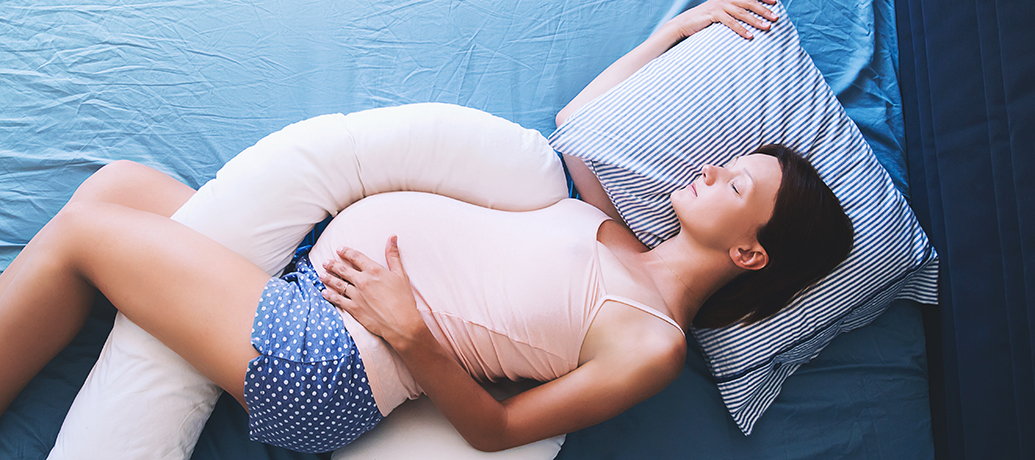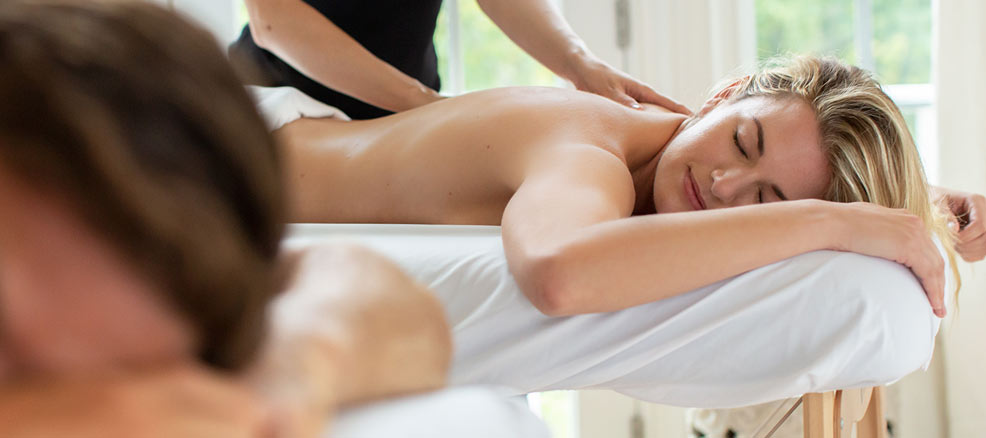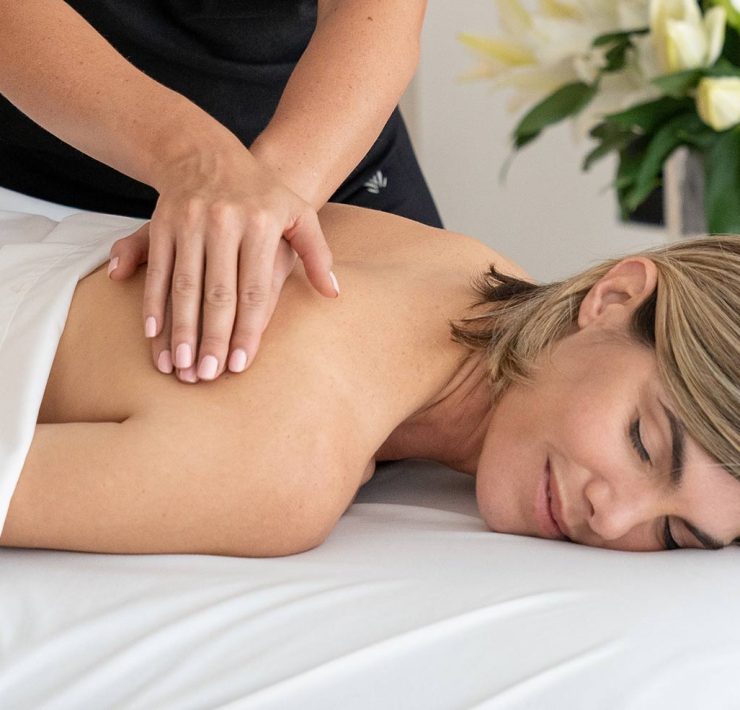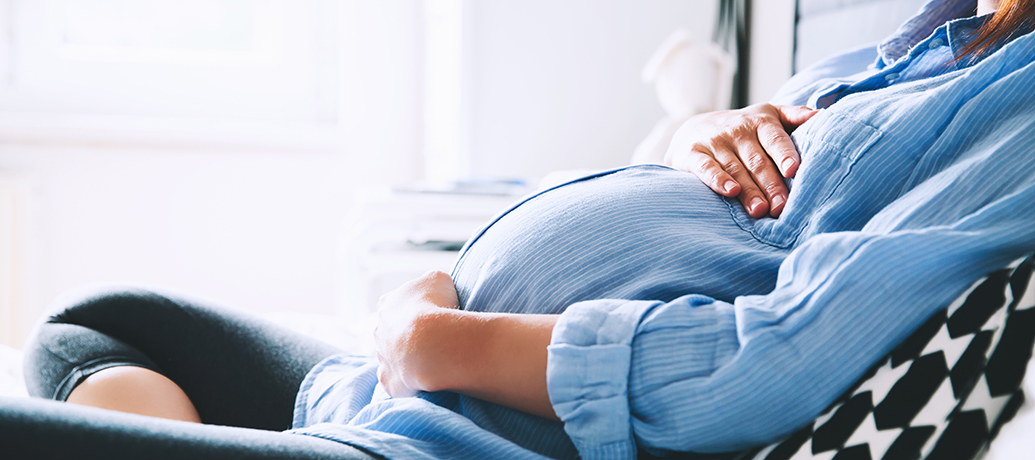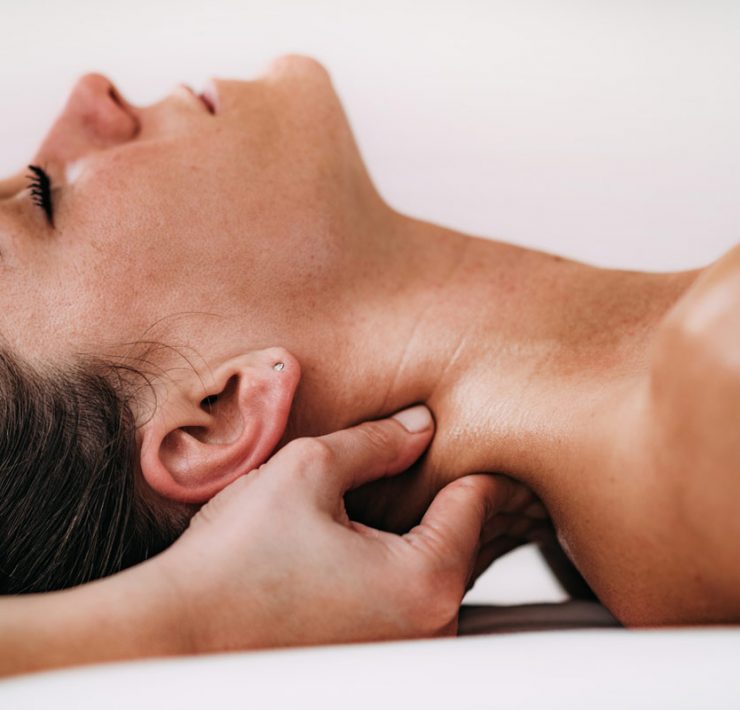You’ve just had a new baby – congratulations!
Chances are, you can’t remember a time when you’ve been happier than right now. (Or more tired, groggy, smelling of spit-up, and way behind on laundry, but we digress.)
With all the time you’re spending nursing, you’re probably dealing with some serious adjustments following childbirth on pretty much every level. Most notable are the mental/emotional side effects along with the physical side effects as well.
There are the physical pains, like neck and shoulder aches (7 pounds gets heavy when you’re holding your little bundle day in and day out!). Right after giving birth, swelling can be a frustrating side effect of all the fluid changes that come with having your baby. Nobody really warned you about how achy and slow-moving your body would be after the monumental task of giving birth. Talk about the biggest workout of your life!
Side note: You are an amazing rockstar who birthed a baby! Go you!
And then there are also the mental and emotional challenges that can begin to show unexpectedly. In some cases, this develops into postpartum depression. Whether you’re finding bonding difficult, feeling isolated, struggling with anxiety about you or your baby’s safety, or even having paranoid thoughts, postpartum depression is much more than just a wet blanket on an otherwise happy time.
Postpartum depression (PPD) is often used as an umbrella term to describe the perinatal mood and anxiety disorders, which encompass everything from more classic depression, to anxiety and panic disorder, and a whole spectrum in between.
It can be overwhelming because you must make time to reduce that swelling, ease your stress to help you establish a great breastfeeding relationship with your newborn, help your whole body recover more quickly from giving birth AND nurture your mental and emotional well-being. How can you possibly manage it all?
Let The Self Care Begin
Massage therapy is a great place to start.
And before you say, “There’s no way I can make time for a massage, and I’m not ready to leave the baby with a babysitter yet!” don’t worry—if you book an in-home massage, you can request a massage therapist who is comfortable having the baby in the room during your massage. Or, you can have your partner watch your bundle of joy just a room over while your knots and tension melt away in the comfort of your own home.
When you book a massage following birth, it can be referred to in a variety of terms, including postnatal massage, postpartum massage or maternity massage. This gentle massage is enjoyed by brand-news mothers in the days and weeks after giving birth. A postpartum massage is great to aid the release of oxytocin (a hormone that helps with baby-bonding and nursing) and ease various post-birth issues, including swelling, back pain, out-of-whack hormones, and postnatal depression.
Alright, let’s get down to it: Here are four reasons why exactly why postnatal massage is a perfect treatment during postpartum recovery when it comes to your mental, emotional and physical health.
1. Postnatal massage can reduce swelling after delivery
So, you’re leaving the hospital, thrilled to check out of L&D, but when you go to slip your feet into your favorite shoes, they don’t fit. In fact, your feet and ankles are so swollen you can barely squeeze them into the fuzzy socks you brought with you!
What gives?
Postpartum edema (or swelling) happens because the body has naturally been retaining fluid to help the body prepare for childbirth, which it then eliminates after the baby is born.
Almost all women experience at least mild swelling after they give birth and their body re-adjusts its fluid levels.
massage speeds up the removal of excess fluid
The waste products of your body’s processes – called lymph fluid – naturally move throughout your body constantly as your muscles flex and extend, but when this elimination of fluid slows, it leads to edema or a buildup of excess fluid.
Massage speeds up this removal of excess fluid by shifting the movement of lymph from the extremities and forcing it back into the veins and lymph vessels where it can be disposed of naturally. Special massage techniques called Lymphatic Drainage are ideal for making this fluid shift.
When combined with compression bandaging, lymphatic drainage massage can reduce swelling in the legs by up to 70%, according to one study.
In addition to massage, keeping the legs elevated, avoiding standing for too long and drinking plenty of fluids (although it sounds counter-intuitive!) are also important for reducing postpartum swelling.
2. Massage reduces stress, helping promote a healthy breastfeeding relationship
It might be perfectly “natural,” but anyone who tells you breastfeeding comes easily to everyone doesn’t have their facts straight.
Now that you’re in the thick of the “eat, sleep, poop, repeat” cycle, you understand just how stressful it is to be the sole person responsible for your tiny human’s nutrition.
Unfortunately, when you’re tense and stressed about getting breastfeeding off on the right foot, it actually makes nursing even more difficult since your baby picks up on that tension, causing a negative feedback loop of sorts.
a mom that’s less stressed about nursing will be more successful and less likely to stop breastfeeding early
Also, research shows that if a mother perceives that she is not meeting her infant’s nutritional needs, it can lead to early cessation of breastfeeding, but if a mother believes that she is successfully feeding her infant, it provides the mother with a positive drive to continue breastfeeding her child.
Translation? A mom that’s less stressed about nursing (and believes she can do it) will be more successful and less likely to stop breastfeeding early.
Massage from a trained and licensed massage therapist can ease your stress and reduce the neck pain that comes from holding a tiny human still long enough to nurse them day after day.
Massage has been proven to reduce cortisol levels – the body’s stress-response hormone – in the body by up to 31%, on average. In addition, extreme postpartum stress and anxiety can lead to postpartum depression (PPD), and studies show that combined with other treatments, massage can be effective for treating PPD.
3. Postpartum massage can speed up physical recovery from the challenges of pregnancy
In the days and weeks following delivery, you’ll experience varying levels of soreness throughout your body.
From neck aches due to repetitive movements when holding the baby, to pelvic soreness from shifting bones and ligaments, to low back pain caused by diastasis recti, there are a lot of “growing pains” that come along with growing a small human.
Gentle massage is appropriate as early as a few weeks after giving birth and can ease many of the discomforts associated with the postpartum stage.
A good massage therapist will adjust their routine and techniques to meet your postpartum needs. They may work primarily side-lying to ease pressure on your tender breasts and still-swollen uterus.
Massage in the early days postpartum can help improve posture and reduce lower back pain – which has been constantly challenged throughout your pregnancy by your growing uterus and shifting pelvis, which can reduce lower back pain.
If you’ve had a C-section, postnatal maternity massage can help your body heal faster (just make sure your massage therapist avoids the area of the incision on your abdomen), and of course, get your doctor’s OK before getting a maternity massage after your operation.
4. Prenatal Massage Can Reduce Postpartum Depression Symptoms
PPD has many different symptoms, but the most common include uncontrollable or paranoid thoughts, anxiety or panic attacks, fear of being alone with the baby or of being a bad mother, repeated thoughts of harming the baby or self, lack of interest in the baby, friends or family, inability to sleep or sleeping too much.
If you are experiencing any of these symptoms, don’t be ashamed. Better yet, know that you are far from alone.
at least one in five women experiences postpartum depression within the first year after having a baby
Research into natural methods for treating this debilitating condition has found that massage therapy is a promising option. One study of women who received regular massage for 12 weeks during pregnancy showed not only reduced depression during pregnancy, but also lasting effects into the postpartum period. Newborns born to these mothers also had healthier birth weights and lower cortisol levels (an indicator of stress) than the babies of mothers who did not receive massage.
massage can be used as a preventative measure during pregnancy to reduce the risk of PPD after birth
More Information About Postpartum Depression
Another study found that a combination of yoga and prenatal massage reduced depression and premature births for pregnant mothers. This evidence suggests that massage can be used not only as a relaxation method after a mother is diagnosed with PPD, but also as a preventative measure during the pregnancy to reduce the risk of PPD after the birth.
Consider Joining A Support Group
Low social support is known to be one of the indicators for postpartum mood disorders, so creating a community for new mothers is essential. If you or someone you know is experiencing postpartum depression or anxiety, support groups like Postpartum Support International are a place to form a community and get support.
Even engaging with your own friends or acquaintances and opening a dialogue about mental health and self-care can make a world of difference. Who knows, you may meet other moms struggling with the same issues who want to do a regular self-care check-in with you.
Whether you gift an in-home massage for all of your girlfriends or start a book club, forming meaningful connections can help when times are hard. Women can even support one another by swapping childcare while a friend receives their massage, or rotating hosting a regular “massage circle” where one therapist works on each of the women in back-to-back sessions.
It does require creativity to fit in a massage while caring for a newborn, but when you establish a support network, it becomes easier to prioritize self-care.
Finding the right postpartum massage therapist
When you’re knee-deep in the milky snuggles, sleepless nights, and endless laundry of a new baby, the last thing you want to sort out is finding the right postpartum massage therapist. Let us take the guesswork out of it for you.
When you schedule an in-home massage with Zeel, you know you’re getting a highly trained and skilled massage therapist, and you can even keep baby close by during the session since the massage is in your own home. So, relax, lay back, and let us put your – sleep-deprived, new parent – mind at ease.
You deserve it.
Disclaimer: Nothing in this article should be taken as medical advice. Please consult with your medical professional if you or someone you love needs medical advice and support. If you or someone you know needs help, you can contact the National Suicide Prevention Hotline 24/7 at 1-800-273-8255.
Margo Carroll is a marketing strategist and email funnel copywriter for online business owners. She has worked with many massage therapists and has been featured in Massage magazine, the Massage Business Blueprint and MindBodyGreen. Learn more about Margo at margocaroll.com and on LinkedIn.


